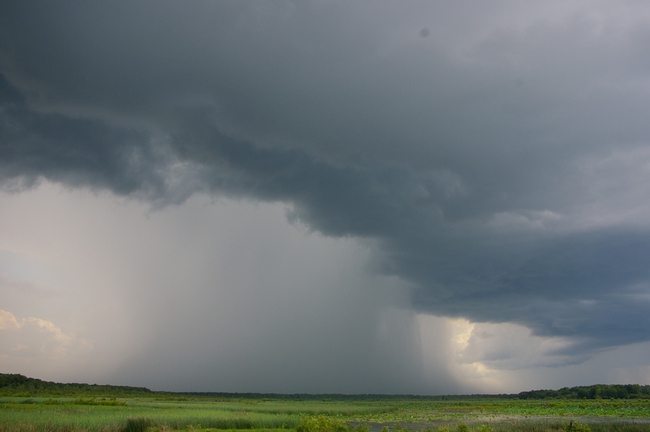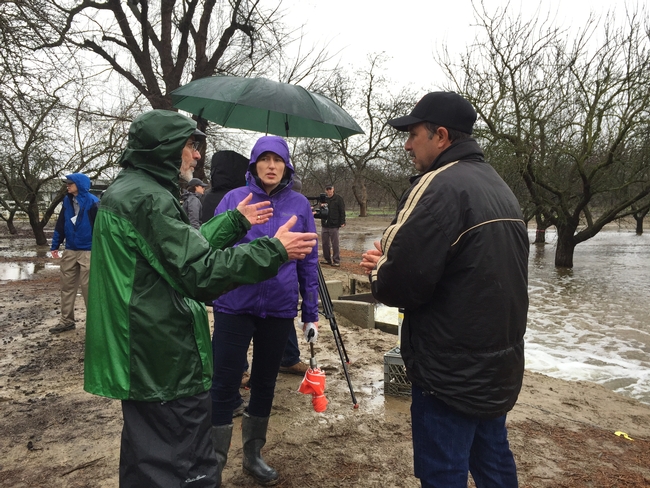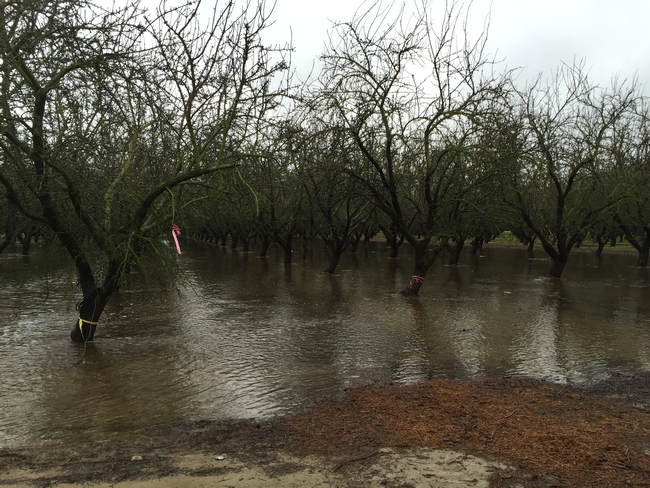Posts Tagged: aquifer
El Niño isn't filling Monterey County lakes as quickly as other state reservoirs
Despite frequent rain since the New Year, the water levels in two Monterey County lakes aren't rebounding at the same rate as drought-stricken lakes in other parts of California, reported Ramin Skibba in the Monterey Herald.
In December, Lake Nacimiento was at 16 to 17 percent of capacity. It has now risen to 22 percent. Lake San Antonio, which dropped to 3 percent of capacity last summer, is still at 3 percent now. It is so low that engineers refer to it as a "dead pool" because gravity cannot pull water out of the reservoir when it is at that level.
The Monterey County lakes don't fill as quickly as other lakes - such as Shasta, Folsom and Oroville - because they are fed by relatively small watersheds. Nacimiento and San Antonio were built in the 1950s and '60s for flood control and to recharge aquifers. With dropping aquifer water levels, farmers have had problems with their wells, the story said.
“Some growers' wells pull in as much air as water, so that they need repairs or lose the wells entirely. I've seen well drillers around, which indicates re-drilling,” said Michael Cahn, a UC Agriculture and Natural Resources Cooperative Extension advisor in Monterey County. “This is a cost for agriculture.”
As they drill deeper, farmers also risk more seawater flooding in, contaminating the limited water supply. It was seawater intrusion that originally led to the construction of the Nacimiento and San Antonio dams.
Cahn was quoted at the end of the story with a positive message.
“The aquifers are currently at the lowest levels ever recorded, but they can go back up,” he said.
Researchers study farm field flooding for aquifer recharge
UC ANR Cooperative Extension specialist Toby O'Geen was the lead author of research published in California Agriculture journal that identified agricultural lands in California suitable for flooding in order to bank groundwater. He has created an app that allows landowners across the state to assess the suitability of their property for groundwater banking.
The Modesto project will determine what impact winter flooding will have on the health of almond trees and almond yield. UC ANR Cooperative Extension advisor Roger Duncan was quoted in the Los Angeles Times about the potential advantages and disadvantages of flooding crops in the winter. He said water could spur more fungal diseases, but could also drown out worms and mites that damage crops.
The Almond Board of California is funding the project, anticipating that certain almond orchards will be good candidates for groundwater recharge.
"Almond orchards have good soil characteristics, and water delivery systems are already in place,” said Bob Curtis, director of agriculture affairs for the almond board. “Winter flooding should actually benefit the trees while replenishing groundwater to benefit us all."
Following are recent articles about the project:
Researchers test a possible drought solution by flooding an almond farm
Geoffrey Mohan, The Los Angeles Times, Jan. 20, 2016
(Reprinted in Daily News 24/7)
Scientists flood almond orchards to restore groundwater in California
Capital Public Radio, Jan. 20, 2016
Stormwater floods Modesto almond orchard in experiment to restore aquifer
San Jose Mercury News, Jan. 19, 2016
(Reprinted in the Contra Costa Times)
Researchers show off groundwater recharge near Modesto
Modesto Bee, Jan. 20, 2016
(Reprinted in the Fresno Bee and Bloomberg Business)
UC Davis scientists flood Modesto orchards in hopes of finding way to restore groundwater
CBS13, Sacramento and Modesto affiliates, Jan. 20, 2016
Researchers test a possible drought solution by flooding an almond farm
KTLA News 5, Jan. 20, 2016
(Rebroadcast on KRQE News 13)
Orchard tries experiment to restore aquifer
Morning Ag Clips, Jan. 20, 2016
Almond orchard key to water banking experiment
AgraNet, Jan. 20, 2016




